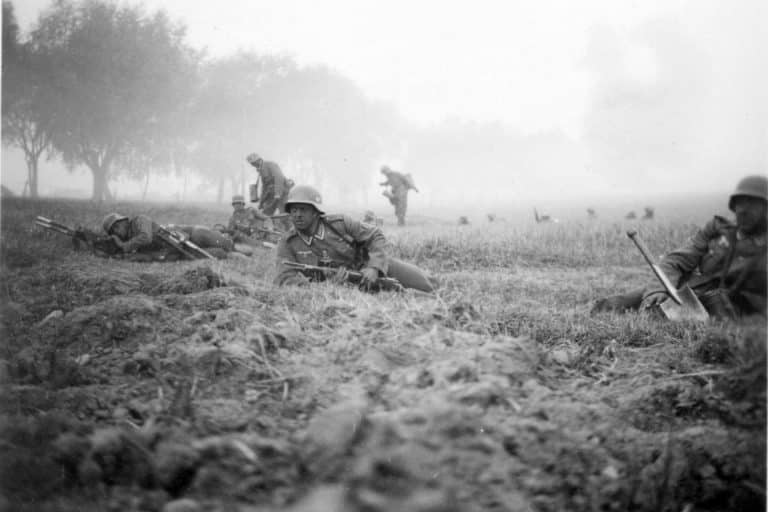[Video] Fascinating World War 2 History Facts
Fascinating World War 2 History Facts
Transcript:
When German forces occupied Paris in 1940 World War 2, French troops sabotaged the Eiffel Tower by cutting its elevator cables. This clever act ensured that if the Nazis wanted to fly their flag atop the iconic landmark, they’d have to make the grueling climb by foot.
French art historian Rose Valland played a quiet yet critical role in saving European culture, pretending not to understand German. She secretly tracked over 20,000 stolen artworks during the Nazi occupation. Records that helped recover nearly 60,000 pieces after the war.
At Trent Park in England, captured high ranking nazi officers were treated to comfort and conversation, unaware that their every word was secretly recorded. The British used hidden microphones to gather critical intelligence, including details about Germany’s advanced weaponry programs.
The allies used inflatable tanks, fake radio traffic, and cardboard aircraft as part of Operation Fortitude to convince the Nazis the D-Day landings would occur in Pas-de-Calais, not Normandy. This elaborate deception helped ensure the success of the real invasion.
Soviet women served in nearly every military role during World War 2, including snipers. One of the most lethal was Lyudmila Pavlichenko, who racked up 309 confirmed kills and earned the nickname Lady Death.
In 1941, the entire Danish resistance worked to smuggle over 7,000 Jews to safety in neutral Sweden. The effort carried out by fishermen and everyday citizens saved nearly the entire Jewish population of Denmark from Nazi deportation.
###
World War 2 was one of the most complex and far-reaching conflicts in history, and beyond the battlefield strategies and major turning points, it was also filled with moments of ingenuity, bravery, and unexpected defiance. These lesser-known stories remind us that the war wasn’t just fought with weapons—it was also fought with ideas, deception, and the unyielding courage of individuals.
From Paris to Denmark, these six fascinating facts reveal just how creative and resilient people could be in the face of tyranny. When Nazi forces occupied Paris in 1940, French soldiers quietly sabotaged the Eiffel Tower by cutting the elevator cables.
This meant that if the Germans wanted to hoist their flag atop the iconic landmark, they’d have to make the exhausting climb by foot. It was a symbolic act of resistance, a quiet insult to the occupiers, and a reminder that not all victories could be easily claimed—even when cities fell.
In the art world, Rose Valland, a curator at the Jeu de Paume Museum in Paris, pretended not to understand German as Nazi officers cataloged stolen artworks. In reality, she was secretly recording everything. Over the course of the war, she documented more than 20,000 art thefts, risking her life to preserve cultural history. Her efforts later helped recover nearly 60,000 stolen pieces, and she stands as one of the unsung heroes of art preservation during wartime.
Meanwhile, British intelligence executed one of the most clever deception strategies of the war. At Trent Park, a POW camp for high-ranking Nazi officers, prisoners were treated to luxury accommodations—comfortable rooms, fine meals, and polite conversation. What they didn’t know was that the entire estate was bugged with hidden microphones. These relaxed surroundings loosened tongues and led to the discovery of critical secrets, including the location of German V-2 rocket facilities.
Operation Fortitude added another layer to the Allies’ deception playbook. Inflatable tanks, dummy landing craft, fake radio transmissions, and even actors in uniform were deployed across southeastern England to convince the Germans that the D-Day invasion would occur in Pas-de-Calais rather than Normandy. The ruse worked, keeping German troops stationed away from the true invasion site and contributing directly to the success of the largest amphibious assault in history.
Perhaps one of the most inspiring stories came from Denmark. In 1943, when word spread that the Nazis planned to deport the country’s Jewish population, Danish citizens sprang into action. Fishermen, farmers, and ordinary families worked together to smuggle over 7,000 Jews to safety in neutral Sweden. The operation saved nearly the entire Jewish population of Denmark—a stunning example of solidarity, bravery, and quiet rebellion against genocide.
Together, these stories highlight the many forms resistance can take—whether through sabotage, deception, or sheer human compassion. They remind us that history is not only shaped by generals and governments, but by curators, civilians, spies, and everyday heroes who refused to stay silent in the face of injustice.

![[Video] Fascinating World War 2 History Facts](https://historychronicler.com/wp-content/uploads/2025/04/Screenshot-2025-04-11-at-7.17.46 PM.jpg)





![The Assassination of Reinhard Heydrich – Operation Anthropoid [VIDEO]](https://historychronicler.com/wp-content/uploads/2025/02/Screenshot-2025-02-18-at-1.46.23 PM-768x431.png)
![[Video] Female Resistance Fighters of WW2 Part 1](https://historychronicler.com/wp-content/uploads/2025/04/Screenshot-2025-04-05-at-12.11.15 PM.png)
![[Video] The Battle for Castle Itter – “The Last Battle” of WWII](https://historychronicler.com/wp-content/uploads/2025/04/Screenshot-2025-04-23-at-8.14.46 PM-768x480.jpg)